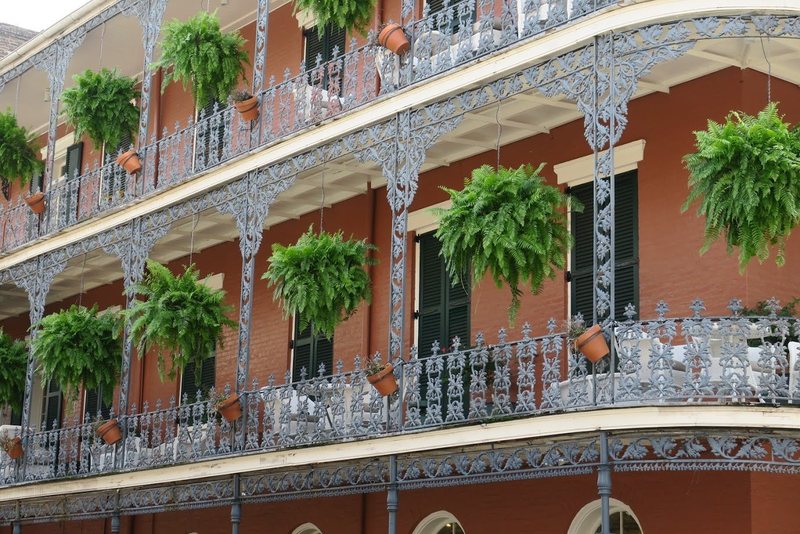Ornamental iron works are exquisite pieces of art that we often choose to use to boost our curb appeal. Whether in the shape of interior balcony railings or exterior entry gates and fences, wrought iron works are always admired for their awe-inspiring beauty.
But let’s follow up on how this amazing trade started and how it grew to its recent state of proficiency throughout the years.
The Dawn of Wrought Iron
You most probably know that the period between 1200 BC and 600 BC was called the Iron Age, and there is evidence revealing that iron was used as far back as the 4th millennium BC in Egypt. However, it wasn’t before the 16th century AD that creating ornamental ironwork became quite a popular trade.
Actually, the Hittites (Anatolian people) were the ones that used to work with wrought iron even before the dawn of the Iron Age, though their production was quite limited to satisfy the mass market demands.
Before the introduction of metal smelting during the Iron Age, the only source of usable iron for humans was the one found in the fallen iron meteorites that crashed on Earth. Curiously enough, Tutankhamun was buried with a dagger that is believed to be made of meteoric iron.
Ornamental Iron Works in the Middle Ages
Iron manufacture comes down to 3 essential practices: mining, smelting, and smithing. Our knowledge of those practices in medieval times comes mainly from the book “De re Metallica” (On Metallic Matters) written by Georgius Agricola in 1556. From his book, we learn that mining back then involved tools for digging and splitting the rock (iron ore), pulling instruments, drainage pumps, and ventilating machines.
Iron masters were first concentrated on producing weapons and armors. In the 16th century wrought iron ornamental work shifted the focus of iron mastery from weapon making to beautiful designs that adorned palace doors and church fences. Notre Dame de Paris is one architectural masterpiece raised in Medieval tiles that incorporated ornamental ironwork.

Photo: The Gates of Notre Dames, Paris
Renaissance Ornamental Iron Works in Spain
Cathedrals in Spain decorated their windows with religiously significant ornamental iron works to both protect the temple and inspire their congregation. In the 16th-century Spanish iron craftsmen were recognized as being the best in their craft. Their massive decorative ironwork creations – screens called “rejas”- adorn cathedrals all over Spain. Some of those screens and grilles rose as high as 30 feet and were decorated with rhythmic linear patterns, often interlacing tendrils and plain lines that were also known as arabesque decorations.
The Royal Chapel of Granada has one of the most exquisite examples of fine ornamental iron mastery following this particular style.

Photo: Reja Mayor, Royal Chapel of Granada
Baroque Ornamental Iron Works in France
France, under the patronage of King Louis the XIV, took decorative ironworks in another direction – wrought-iron balconies, stair railings, and gateways were ornated with rich scrollings and daring foliations to impress and to create a prestigious sense of abundance and fortune.
French iron smiths were known for their clever incorporation of ornamental iron works in all kinds of projects. Chantilly Castle is an astonishing example of French ornamental mastery.

Photo: Chantilly Castle gates
Rococo Ornamental IronWorks
The Rococo style in iron works was first introduced by Juste – Aurele Meissonnier and Gilles – Marie Oppenordt, two artists who saw the need for balance between asymmetry and astonishing curves in the iron ornamentation.

Candelabra by Juste Aurèle Meissonier and Claude Duvivier, 1734
The wrought iron designs began to take the shape of exquisitely elaborate figures. Anything from gates, window frames, railings, to chandeliers, ornamental scrolls, and fences was made of or decorated with wrought iron ornaments and filigree-work.
The “worked iron” (wrought iron) was forged by blacksmiths with anvils and hammers into designs based on medieval legends, religious scenes, and mythology characters. Ornamental ironwork often mimicked the shapes of plants and animals.
Art Nouveau Ornamental Iron Works
The Industrial Revolution brought significant changes to the way ornamental ironwork was created. The English ironmaster – Henry Cort came up with a new way to refine wrought iron and helped to promote its use significantly.
In 1784 he patented a puddling furnace with grooves that mechanized the production of iron – essentially speeding up the otherwise very labor-intensive process. That introduced the mass production of ornamental ironworks.
Cort’s invention sparked a conversion among the Arts and Crafts movement which strongly influenced the development of ornate ironworks. Instead of counting on the mechanized production of iron ornaments, the movement pushed for quality ironwork that was handcrafted and available to the ordinary man.
In the 18th-century decorative ironwork bloomed under the influence of The Art Nouveau style. It focused on creating custom decorative iron works instead of going for mass production projects. Creativity was put on a pedestal at that time and the flora and fauna motives were particularly favored in the ornamental ironwork. Signature touches of the Art-Nouveau craftsmen were the “whiplash” motifs that created a sense of dynamic and elegance.
Hotel Tassel in Brussels, Belgium is an interesting example of such whiplash iron works decorations.

Photo: Hotel Tassel
19th and 20th Centuries Ornamental Iron Works
New Orleans is the city known to have preserved a lot of its historical ornamental iron works. For instance, the French Quarter shelters exquisite decorative iron works forged by Spanish and French masters.

Photo: LeBranche House
The gateway of Cabildo is one of the last standing examples of Spanish mastery with moulding beaten from solid bars.
The beginning of the 20th century marked another wave of progress for ornamental iron work. Decorative ironwork was influenced by Edgar Brandt – a french ironworker and weapon designer who approached ornamental ironwork from a new perspective and created compositions that resembled beaten silver.

Photo: Firescreen by Edgar Brandt
His work was displayed at the Arts Decoratifs Modernes exhibition in Paris in 1925 and soon after his influence on the iron works design spread throughout the globe.
It was at this time the cast and wrought iron works saw a boom in popularity and were included in many public buildings designs.
Samuel Yellin – an iron craftsman from Philadelphia was one of the most prominent iron smiths in the States during the 1920s. He also helped train more people in the craft by employing over 200 iron smiths in his workshop.
Samuel Yellin was famous for his knowledge of traditional iron designs but he encouraged and worked closely on the creation of new designs himself. The Washington Cathedral, Harvard, and Yale University are ornated with his ironworks.

Photo by Renee Rosensteel: Wrought Iron Gate by Samuel Yellin, Grant Street, Pittsburgh
Iron processing has long been associated with the evolution of human civilization. From a durable material used to create weapons and basic everyday tools, iron’s applications grew to have a much more complex focus. Wrought iron was used as a way to express admiration for the divine and to give way to creativity and utter craftsmanship that celebrate progress.
Today, ornamental iron work is often perceived as a statement piece and stylishly decorates both public and private properties.
At Cacciola Iron Works, we can help you add that touch of elegance backed by years of craftsmanship to your home or office design projects. Call us at 973 595 0854 and learn more.



